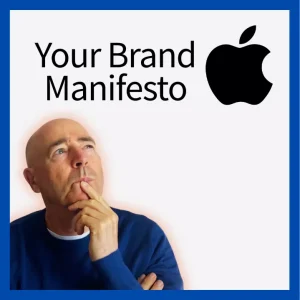Todd Sattersten wrote a great article in his Biz Book Lab newsletter recently. I replied, he replied. And, then I replied again. Here’s what I wrote the second time…
Read the first article: The Paperless Book – Part 1
One of the key references I look at in the conversation about new and old technologies are some of the principles behind Industrial and Information. Alternatively, Mechanical and Digital. A la Marshall McLuhan.
Linear Thinking
The linear nature of a book is probably more obvious in fiction. There are a number of non-fiction styles that enable the reader to dip in and out without having to read from cover to cover.
I also think ‘linear’ is a fallout from Industrial Technology. Henry Ford’s factory production line is the ultimate linear process.
To use the left brain – right brain metaphor, linear suits the left. The gestalt or holistic approach suits the right. Thus books can and probably should incorporate both angles to appeal to a greater audience.
Search Trumps the Linear
The One Minute Millionaire by Mark Victor Hansen and Robert Allen is a simple example of this. On one side of the page is a story and on the other discrete snippets of conceptual ideas.
The other reason that linearity loses its touch is search. As soon as we can hyperlink and search for connected threads then we can read our own pathway through the material.
Hyperlinks built the web and Apple’s ancient software Hypercard (1987) foreshadowed how to present information in non-linear ways.
I suspect this is more of a mental challenge for the reader than for the content producer.
Books, Movies and Video Games
And I suggest the overthrow of the movie industry by the video gaming industry shows that interactivity is more desirable than the passive watching of a linear pre-programmed story. The games industry outsell the movie industry by 2:1. And, this is expected to be 3:1 in the next couple of years.
Part of this is the allure of the buzz word of the week: collaboration. Books are private events. We read them in isolation. Whilst we can do this with video games they’re way more fun when we’re playing with others.
This follows the demise of the horse. It’s less useful as transport and more prevalent as entertainment or hobby. Clearly, it’s no longer the industry of choice.
Ideas Need Boundaries
Inclusion… One could suggest that books having a distinct boundary of inclusion is a function of the technology. All information is connected digitally and the web reinforces this view.
Alternatively, I think this is more of a mental construct than a technology limit. A book contains ideas and ideas need to have boundaries. It’s a bit like having a meal – the separation between a turkey roast and ice cream is advisable to savour the distinct flavours and textures of both.
It’s also critical as a sales device. It’s needs to have a beginning and an end so I know what I’m buying.
Other Communications Media
The other aspect I’d throw into the mix that is rarely mentioned around paperless books are the complementary communication technologies.
I suggest to clients and the like that books are passe and that if you want to be on the cutting edge then making a movie is it. (Perhaps the real cutting edge is games as I alluded to earlier… and that’s another story.)
Al Gore’s Emmy winning An Inconvenient Truth started out as a Powerpoint presentation, they added some stock video, some personal interviews and voila!
Digital Code
Historically, books as a production process came of age in 1439 with Gutenberg. Before that written notes had been around for several thousand years.
More recently, audio recordings, photographs and moving pictures – around a mere 150 years – are possibly bigger competitors to the book than mere digital.
And the most interesting point from this: all these modes can be reduced to digital code. This means they can be interchanged and combined.
A true paperless book would include all things digital: words, images, sounds and movies.
The Obsolescence of Words and Reading
One of the major reasons traditional books were mostly words was because of the production cost of having the drawings drawn. Separate printing plates for each drawing were required.
The paperless book is also a swing against words. The switch by many to ebooks has rarely acknowledged this.
Book Rapper was an attempt at presenting a one-page idea that could be read in an instant via the diagram. The words could then be read as a secondary fillip if one wanted more.
Further, one of the most common requests around the Book Rapper series was to produce audio because people were no longer willing to spend the time to sit still and read. In contrast, audio can be consumed whilst walking the dog, running the treadmill or driving the car.
Interestingly, McLuhan talks about the visual nature of industrial space and the all-surrounding world of auditory space belonging to the information age.
And this leads to the outrageous prediction that perhaps it is not books that are obsolete, it is reading!




